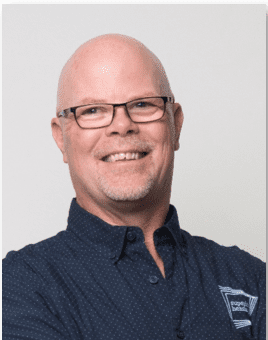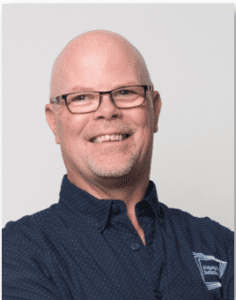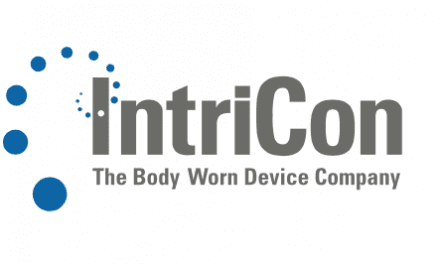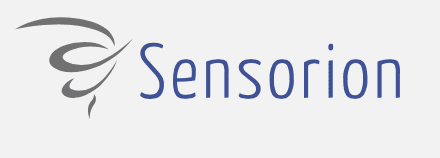Phonak ABCs of eAudiology #1: 10 Steps to Licensure & Stakeholder Support for eAudiology |
The Phonak ABCs of eAudiology is a handbook of step-by-step guides for incorporating eAudiology and Phonak eSolutions into daily hearing care practice. Each guide has been written by a renowned international expert in this field. A comprehensive range of considerations have been broken down into easy-to-follow steps towards practice implementation. Following the 10 steps in this series of implementation guides could see hearing care professionals up and running with eAudiology services in your practice very soon, benefiting from improved workflows and cost savings, providing your clients quality care in a way which is most convenient to them.
Ensuring that your clinic or agency, as well as individual clinicians, are fully prepared to initiate eAudiology is critical to success. In many cases, clinicians may be called upon to provide remote services outside of the region in which they are licensed to practice. In the United States for example, the general rule is that a clinician must be licensed to practice in the state or territory where the client is located. The exception to this rule exists for clinicians working for the US Veteran’s Administration, who can provide remote services to VA clients anywhere. Additionally, clinicians and administrators should be aware that the Medicare Act may be amended to permit certain Medicare providers licensed in a particular state to provide telemedicine services to certain Medicare beneficiaries in a different state. Aside from these exemptions, clinicians should ensure appropriate licensing when considering eAudiology.
In Canada, the same rule currently applies. Canadian clinicians cannot provides services to clients in provinces or territories where those clinicians are not licensed. However, changes are forthcoming that may well allow Canadian clinicians to provide services in all provinces and territories regardless of the province in which they are licensed. This is similar to the situation across much of Europe.
Stakeholder support is of key importance to an eAudiology component of service as well. Without support of pertinent agencies, information technology staff, and administration, it can be difficult to mount a successful program.
Where to start?
Step 1
Ensure that your clinic can provide appropriate support for eAudiology. Evaluate the clinic’s resources including administrative and IT support staff, technological infrastructure, and appropriate facilities (hub and spoke).
Step 2
In a larger agency, such as a hospital or organization of multiple clinics, be sure that administration supports the concept and includes it formally in core documents relating to policy development. In smaller agencies or single clinics, it is often sufficient to commit to the concept verbally. In all situations however, it is important to make the key players aware of the concept and potential challenges.
Step 3
Information technology support is of prime importance for any eAudiology program. Introduce IT staff to the concept and the tools to be used. Be sure that they have a full understanding of the process and can provide all of the support needed to access necessary software platforms and websites. In smaller clinics, be sure to enlist support from an outside IT provider, if necessary.
Step 4
Enlist support of pertinent staff at the intended spoke locations. This may simply be enlisting “eAudiology clinical technicians,” or may involve bringing an agency administration on board, including IT support.
Step 5
Ensure all stakeholders are clear as to where their obligations lie. Support may be limited to an agency commitment to allow eAudiology. It may extend to provision of agency services at hub and/or spoke sites, such as IT support and intake/administrative staff support.
Step 6
Evaluate the physical location of both hub and spoke sites. Some sites may lie outside of a clinician’s license restrictions (across state or country borders, for example). This includes both fixed and mobile sites.
Step 7
Ensure that the clinicians are appropriately licensed to provide services both within and beyond the state, province, or territory (as applicable). Check the webpage or call the office of your professional governing body to get up-to-date with the rules and regulations.
Step 8
If it is apparent that a clinician may be providing eAudiology services across license boundaries, contact the governing body that exists in the spoke site region to determine what options are available for providing services.
Step 9
Update all clinicians’ registration and licensure as appropriate and where possible. Stay current with changes in legislation and clinician guidelines relevant to eAudiology and to Telemedicine.
Step 10
Stay current with changes in agency administration or policy that may affect the ability to deliver eAudiology services.
To download a PDF of the article, please click here: 10 Steps to Licensure & Stakeholder Support for eAudiology
Are you up to the challenge?
Evaluating the readiness of your clinic/agency to incorporate eAudiology is an excellent starting point.
Other Articles in the Phonak ABCs of eAudiology series below:
| 1. | Licensure and Stakeholder Support | William Campbell |
| 2. | Optimizing Your eAudiology Environment | Danielle Glista, PhD |
| 3. | Clinical Applications and Feedback Provision | Gurjit Singh, PhD |
| 4. | Employee Training | Karen Muñoz, EdD |
| 5. | Scheduling and Reimbursement | Rachel Higginbotham, AuD |
| 6. | Technology and Connectivity | Jean Anne Schnittker, AuD |
| 7. | Talking to Clients about eAudiology | Gina Angley, AuD |
| 8. | Client Selection and Other Considerations | Evelyn Davies-Venn, PhD |
| 9. | Family-centered Care and eAudiology | Joseph Montano, EdD |
| 10. | Record Keeping and Data Protection | William Campbell |
About the Author: With 20 years as a clinician, Bill Campbell has a wealth of knowledge and experience with adult and pediatric service delivery. Bill’s interest in eAudiology began in 2006 in trying to provide access to infant diagnostic services in remote Canadian communities. Since then, Bill has been involved in developing a remote assessment protocol for the Ontario Infant Hearing Program, as well as working with colleagues internationally to develop eAudiology solutions.






